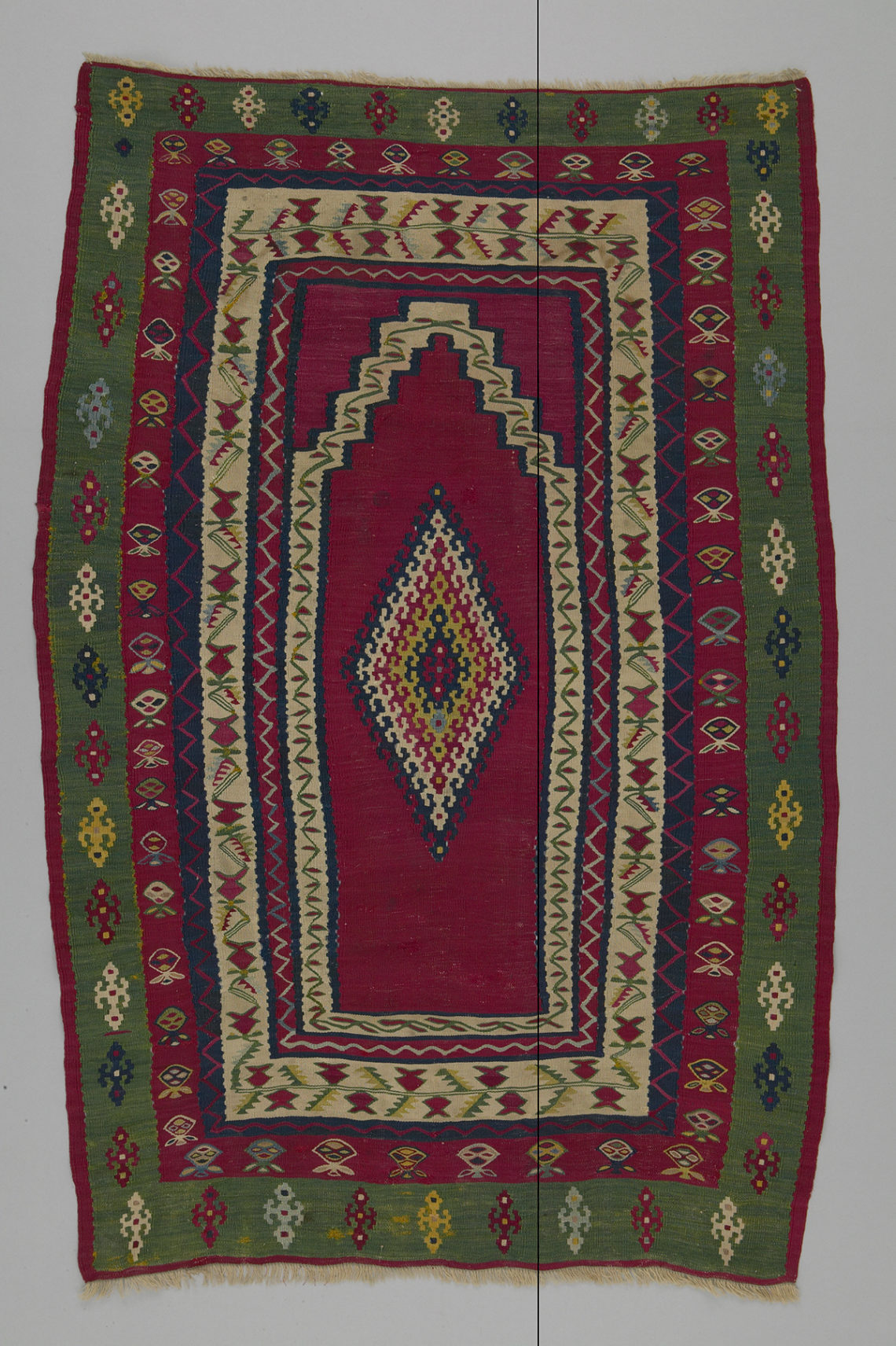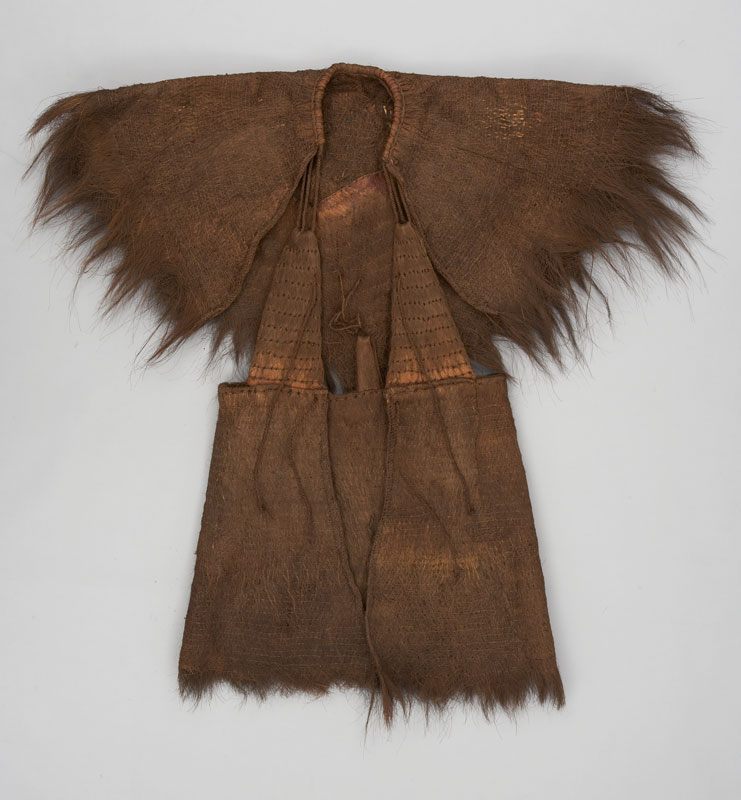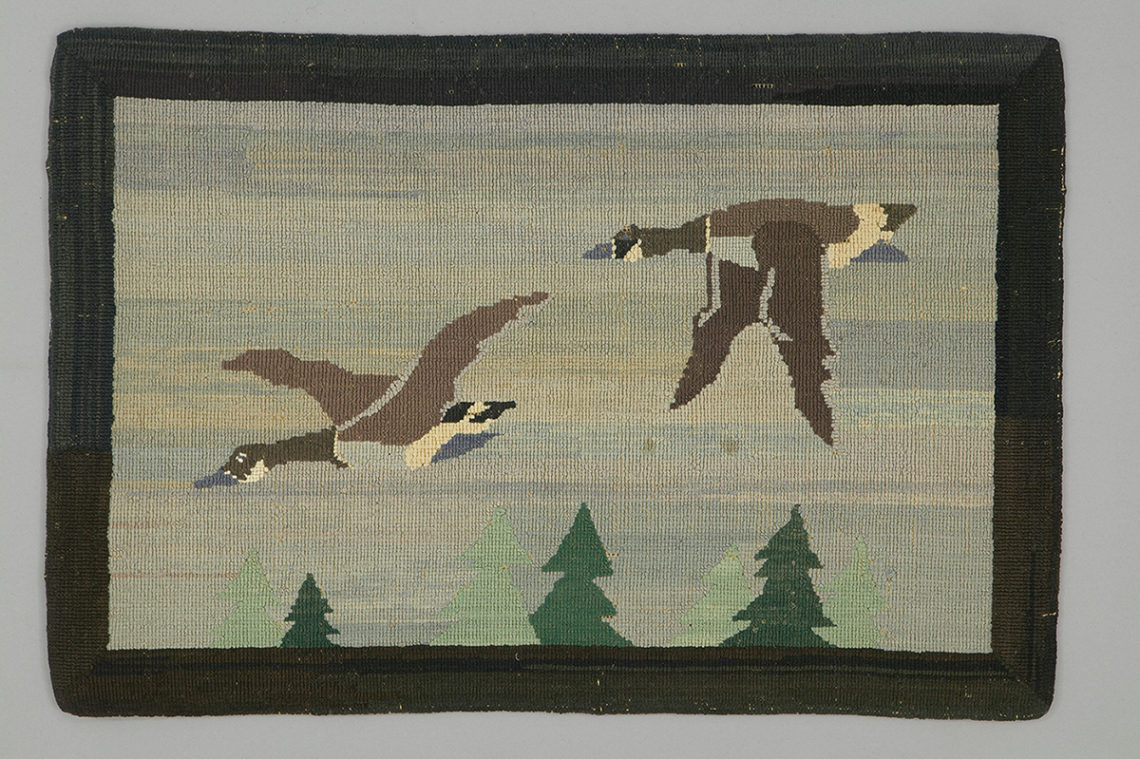Cedar Mat, T88.0786
Our Object of the Week is a Haida cedar mat from British Columbia, made circa 1880.
It is checker woven using red cedar and painted with natural dyes. The painting of the killer whale and wolf heads is attributed to Johnny Kit-Elswa, a young Haida man who acted as translator for Judge James Swan, commissioned to travel to the Queen Charlotte Islands in 1883 to collect objects for the Smithsonian National Museum of Natural History. Among the 126 million objects in the NMNH collection are several Haida ‘Deer rib bones for preparing cedar bark’ that Swan collected on this trip.
Long strips of cedar for weaving are harvested in spring and summer. The cedar is removed in small strips to minimize harm to the tree. The dark outer bark is removed and discarded; the inner bark is stripped into thin pieces and soaked in water so it can be woven. These strips, sometimes in combination with other parts of the tree like the roots and limbs, can be woven into many different forms such as mats, capes, blankets, baskets, hats and fish nets.
Some contemporary Haida weavers working today include Rena Point Bolton, featured on the TMC Virtual Museum of Canada project Narrative Threads, and Lisa Telford, who creates pieces like ‘A Night on the Village,’ a red cedar bustier with guinea-feather trim, and ‘Evening Out,’ a pair of red and yellow cedar high heels, that comment on Indigenous identity, stereotypes and fashion.


